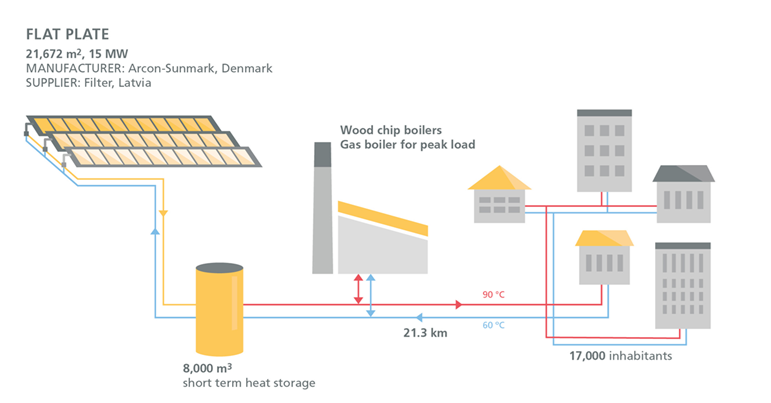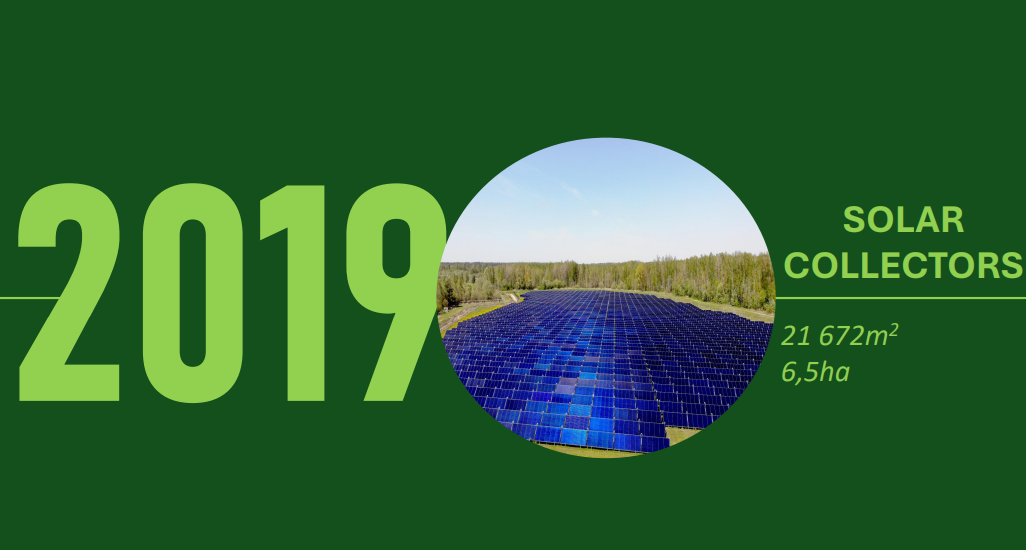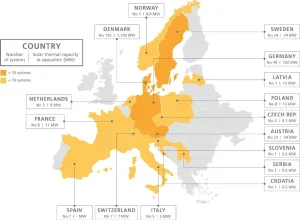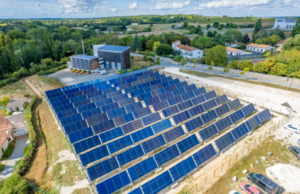How Salaspils in Latvia detoxified its district heating
February 24, 2025
The integration of solar thermal energy into its district heating network has not only provided the small Latvian town of Salaspils near Riga with a more sustainable and emission-free heat supply, but also cheaper heating bills for the citizens connected to it. This was revealed in a presentation given by Ina Berzina-Veita, Managing Director of the municipal energy company Salaspils Siltums, on 20 February 2025 as part of a webinar entitled Salaspils’ speedy heat detox. You can download the presentations from the webinar here.
The webinar, organized by Euro Heat & Power in cooperation with the Covenant of Mayors – Europe and the CEE Bankwatch Network, was moderated by Sara Comparetto, Engagement Officer – Youth & Cities of Euroheat & Power. It kicked off the upcoming crash course for cities on district heating at the Euro Heat & Power Congress on 3 June 2025 in Prague. Cities from across Europe will take part to explore new strategies for decarbonizing urban heating systems for “a cleaner and healthier future”.
First, Prague-based district heating activist Morgan Henley of CEE Bankwatch Network presented the methodology developed by her organization together with the consulting company Exergie to help municipalities modernize their heating and cooling systems using sustainable and environmentally friendly solutions.
“Municipalities with more than 45,000 inhabitants will have to draw up a heat plan in the future”, explained Henley, demonstrating the need for municipalities in the European Union to familiarize themselves with the topic and the laws and regulations underlying it. The principle of the Energy Efficiency Directive (EED) “energy efficiency first” applies here, said Henley.

Layout of the solar district heating system at Salaspils
Source: IEA SHC Task 55
94 % of district heat from renewables
Ina Berzina-Veita, Managing Director of the municipal energy supplier Salaspils Siltums began her presentation by saying “When we talk about decarbonizing Salaspils district heating, we are talking about ten years. I would like to leave it up to you to decide whether that is fast”. The core of the decarbonization of Salaspils’s heat supply was the integration of solar thermal energy into the 22 kilometre district heating network, which supplies almost 85% of the 24,000 inhabitants with heat. According to Berzina-Veita, almost two-thirds of Latvia’s 1.9 million inhabitants are connected to district heating networks.
The Salaspils local DH network has its origins in the 1970s. “When I came to Salaspils Siltums in 2011, I found conditions like something out of a horror film”, she said about the outdated infrastructure for heat production based 100 % on fossil fuels.
Today, Salaspils Siltums generates 94 % of its heat energy from renewable energies. This required investments of EUR 7.26 million, which were provided from EU funds and bank loans. “The banks are happy when they can finance green projects on favourable terms”, according to Berzina-Veita.
First, in 2012, outdated gas boilers were replaced with modern ones and the pipeline network was fitted with industrially insulated pipes. Then, a 7 MW wood chip boiler and in 2016 a flue gas condenser were put into operation. Of great importance at that time was also the introduction of an electronic data acquisition system that enables real-time control of heat energy production, consumption and losses in the heating networks.
In 2019, the decarbonization project was completed with the commissioning of a 21,672 m² solar collector field and an 8,000 m³ buffer storage tank. “I always strive for sustainability and focus on emission-free technologies”, said Berzina-Veita. In 2023, the production mix was made up of 16% solar thermal energy, 78% biomass and 6% natural gas.
While in summer the heat supply is at times completely provided by solar thermal energy, even in winter natural gas is only used to cover peak loads. CO2 emissions have been reduced by 93% and relative heat losses have been limited to 10%.
As the next steps, the Managing Director of Salaspils Siltums is planning the electrification and further digitalization of her district heating network. Photovoltaic-powered heat pumps are to be integrated into the network and the waste heat from a newly built large data centre is to be used. In her capacity as President of the Latvian District Heating Association (LSUA), she is also committed to further pilot projects for solar district heating in her country.
Websites of organizations mentioned in this news article:
Salaspils Siltums: https://salaspilssiltums.lv/en/
Euro Heat & Power: https://www.euroheat.org/
Covenant of Mayors – Europe: https://www.climatealliance.org/activities/covenant-of-mayors/covenant-in-europe.html
CEE Bankwatch Network: https://bankwatch.org/
Euro Heat & Power Congress 2025: https://www.euroheat.org/events/euroheat-and-power-congress-2025
Latvian District Heating Association: https://www.lsua.lv/layout.php?id=3&menu_id=1



